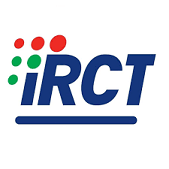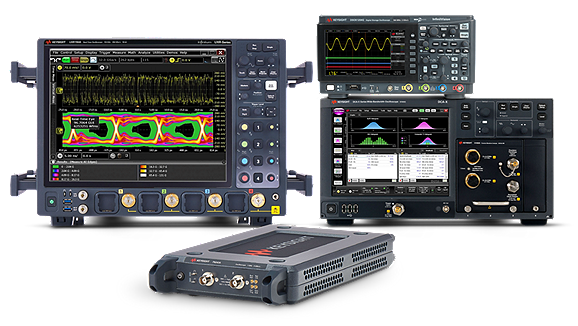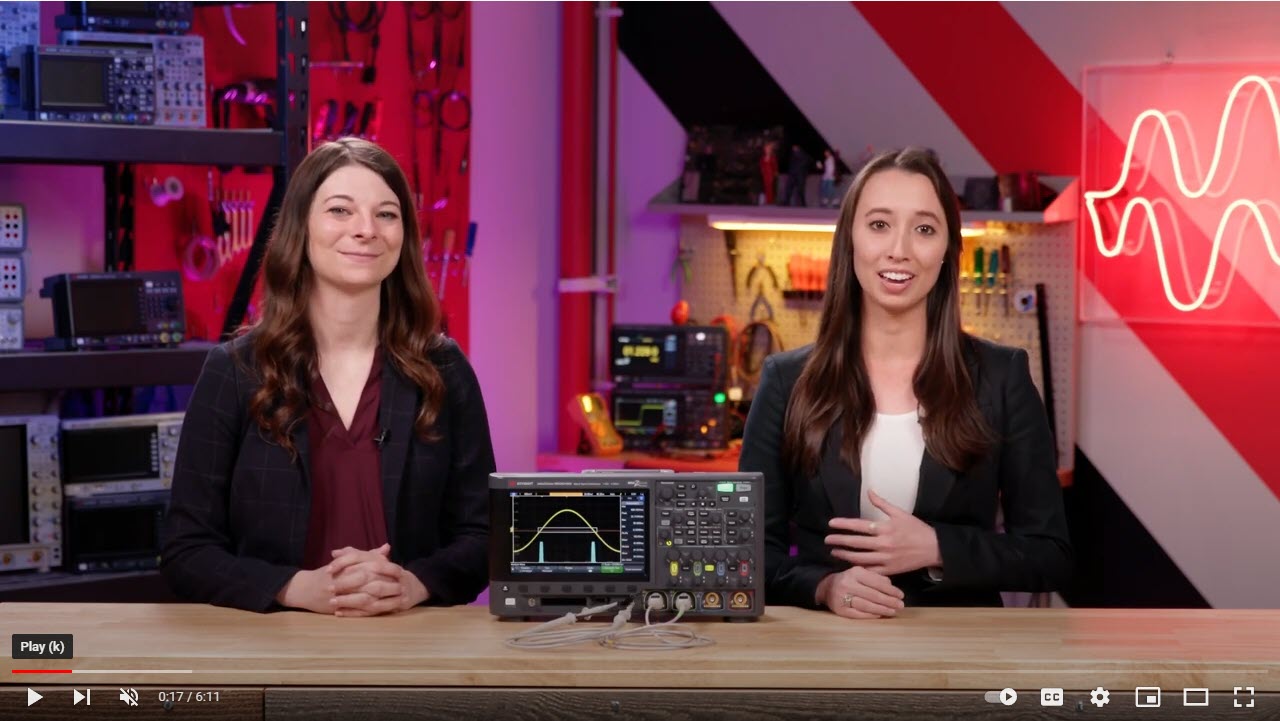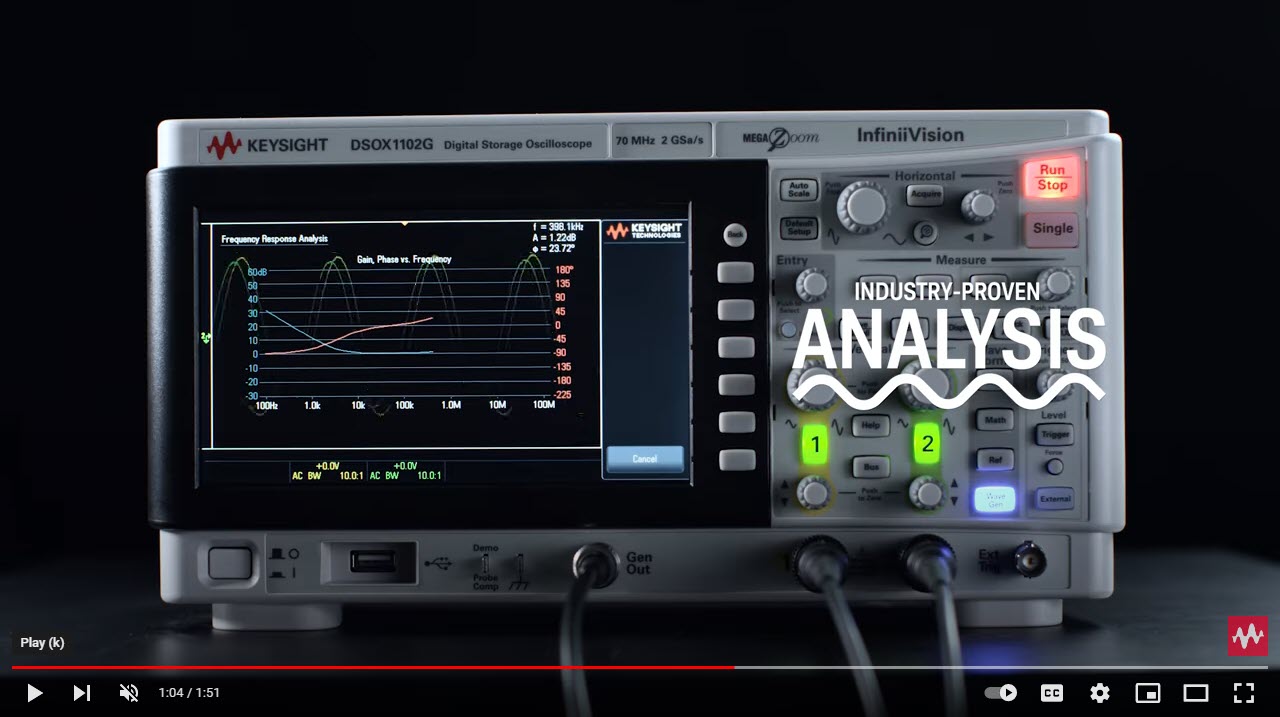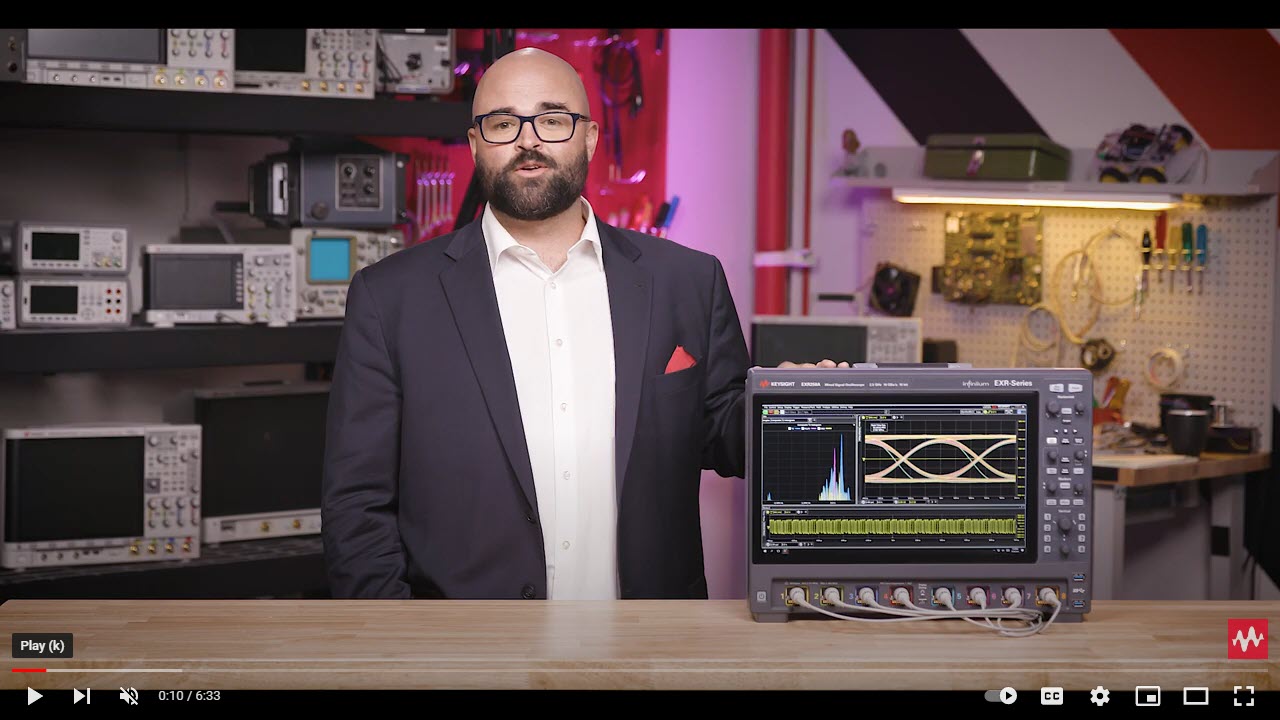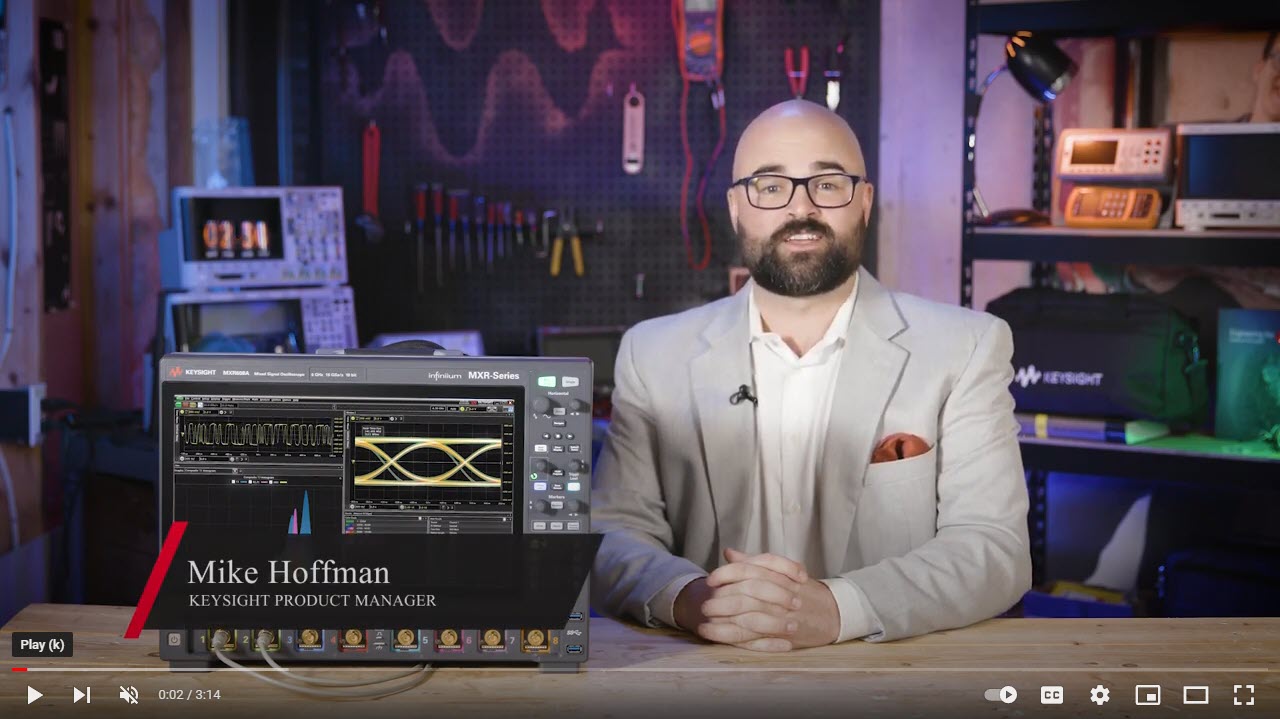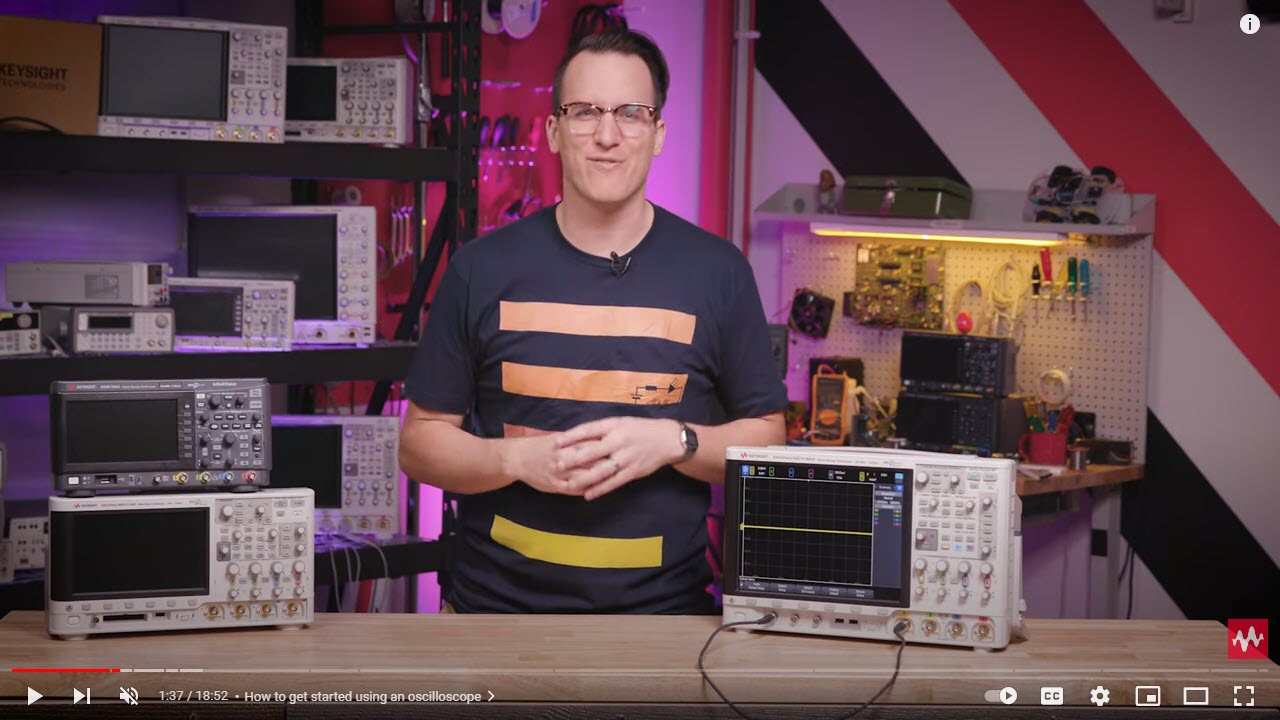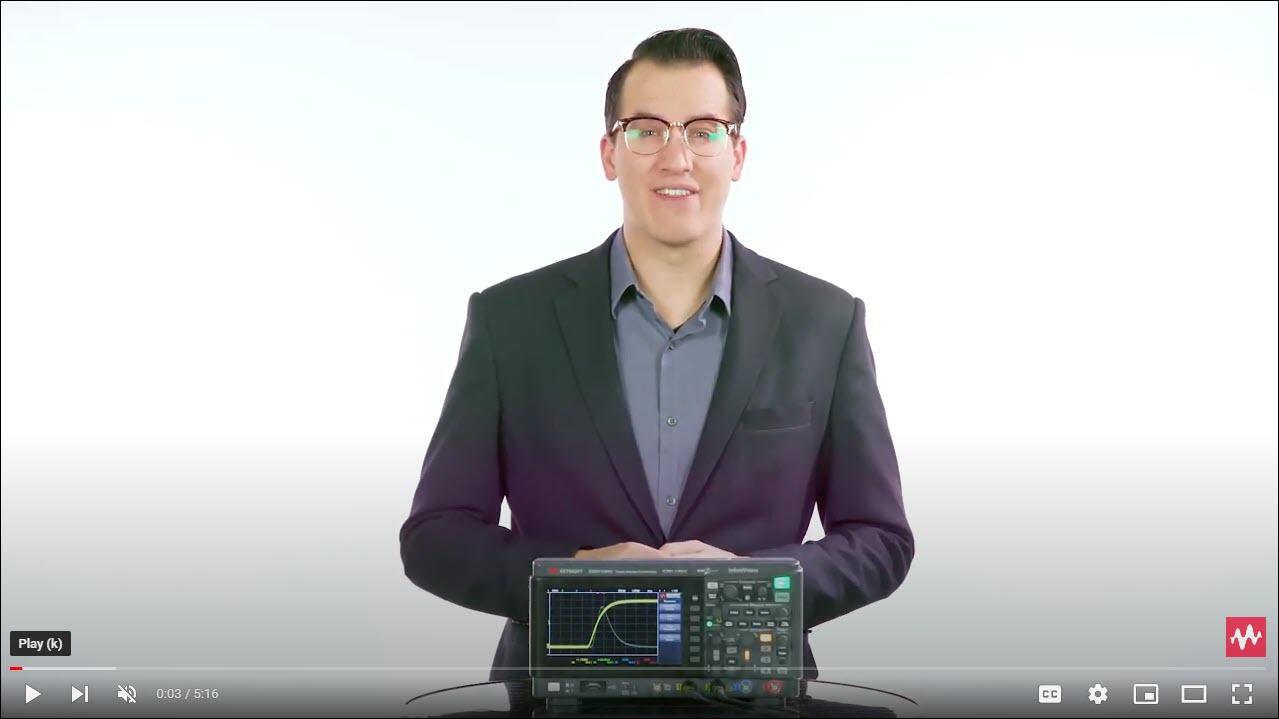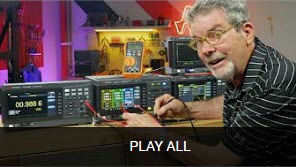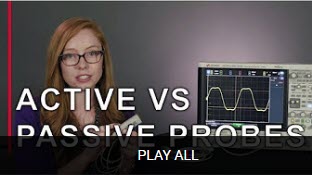Whether you're new to oscilloscopes
or a seasoned pro, Keysight has a wide range of Keysight University courses and videos to support your
continued learning.
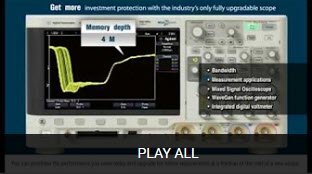
Watch these videos for a quick overview of the Keysight
InfiniiVision 2000 and 3000 X-Series oscilloscopes with 30 models ranging from 70 MHz to 1 GHz.
Breakthrough technology delivers more scope for the same budget.

The 3000T X-Series oscilloscopes offer a capacitive touch
screen, a user interface designed for touch, and the exclusive Zone touch trigger, all combined
with an industry-leading uncompromised update rate of 1 million wfm/s to help you see all of
your signal detail. Plus, advanced analysis capabilities help you solve your hardest challenges
quickly.
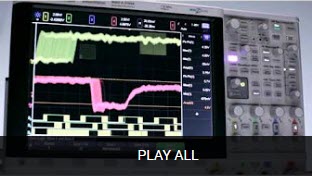
Keysight's InfiniiVision 4000 X-Series oscilloscopes offer
waveform update rates 20 times faster than similar oscilloscopes with the latest capacitive
touch screen technology. Experience the speed of 1 million waveforms/sec update rate and
MegaZoom IV smart memory technology for the most signal visibility. Experience the usability of
the industry's largest display (12.1-inch) and innovative InfiniiScan Zone touch triggering
for easy triggering on any event you see on screen. Experience the integration with the
capabilities of 5 instruments in 1.

InfiniiVision digital oscilloscopes are built around our
patented technology to give you the fastest waveform update rates — enabling you to capture
infrequent glitches in your design. An intuitive user interface and high-end software
applications place automated measurements and accessible expertise at your fingertips.
Episode 2 - How to Combine Resistances
Dig a little deeper into the
basics of how resistance functions, and how that intuitively makes sense for resistors in series
(or serial) and resistors in parallel.
Episode 4 - What is Voltage?
Dig a little deeper into the
basics of electric potential, also known as voltage, and how it behaves in a circuit.
Episode 6 - Ohm's Law
What is Ohm's law? Learn
about the Ohm's law equation, why it's useful for circuit analysis and design, and why
it doesn't always work.
Lesson 1: Survey of Essential Test Equipment
An overview of the four primary
pieces of test equipment used in today’s engineering teaching labs including a digital
multimeter (DMM), DC power supply, function generator, and oscilloscope.
Lesson 2: Scaling Waveforms
Learn how to properly scale
waveforms on the oscilloscope’s display using vertical scaling controls (V/div), horizontal
scaling controls (s/div), and trigger level.
Lesson 5: Cursor Measurements
This lesson shows how to perform
amplitude and timing measurements using the oscilloscope’s cursors, which are sometimes called
markers.
Lesson 6: Automatic Parametric
Measurements
This lesson shows how to the use
the scope’s automatic parametric measurements to quickly perform parametric voltage and timing
measurements on digital pulses with overshoot and ringing.
Lesson 7: Probing Part 2 - Active Probes
This lesson begins by explaining
some of the limitations of standard passive probes. Examples of high frequency, high voltage,
and current measurements are then demonstrated using a high-frequency differential active probe,
a high-voltage active probe, and a current probe.
Lesson 8: Waveform Math and Power
Measurements
This lesson shows how to create
a power waveform using the scope’s waveform math function to multiply a high-voltage waveform
times a current waveform, and then uses an automatic measurement to determine the apparent
power, as well as the real power consumption of a device-under-test.
Lesson 9: Frequency domain Measurements
(FFT)
This lesson shows
frequency-domain measurement examples of various analog and digital waveforms using the FFT
function of the oscilloscope, including an example of a digital clock signal with
coupling/interference where the FFT reveals the culprit amongst the expected harmonics.
Lesson 10: Frequency Response Analysis (Bode
Plots)
This lesson shows how to perform
gain and phase measurements on a L-C-R bandpass filter using the traditional method, as well how
to perform the same measurement automatically using a scope with a built-in waveform generator
and automatic frequency response analysis (Bode plots).
Lesson 13: Triggering Part 4 - Advanced
Parametric Triggering
This lesson first shows
engineering students how fast waveform update rates of the oscilloscope can reveal random and
infrequent “problem” signals. The instructor then shows students how to use advanced parametric
triggering to isolate “problem” signals including an infrequent narrow glitch and a
non-monotonic edge.
Lesson 14: Serial Bus Protocol Analysis
This lesson provides an overview
of common serial bus protocols that students may encounter while studying engineering and then
shows a measurement example of using an entry-level oscilloscope to decode and trigger on CAN
bus signals, which is a common protocol used for many robotics applications.
Lesson 15: Lissajous Curves
This lesson shows how Lissajous
patterns can used to tune/tweak frequency and phase parameters of a device-under-test based on a
unique pattern.
Lesson 16: Acquisition and Display Modes
This lesson shows examples of
when to use special acquisition and display modes of the oscilloscope including waveform
averaging to reduce random noise, peak detect to overcome undersampling, high-resolution to
improve vertical resolution, infinite-persistence to observe worst-case signal extremes, and
roll mode to display very low frequency signals.
Lesson 17: Documenting Test Results
This lesson shows how to save
and recall oscilloscope setup conditions, images, and waveform data. This lesson also
demonstrates how students can remotely access and control oscilloscopes in the circuits lab from
their dorm rooms (or off-campus apartments) using an Ethernet connection.
Lesson 18: Oscilloscope Specifications
Introduces key oscilloscope
specifications that students should understand including bandwidth, sample rate, vertical
resolution, and number of channels. This lesson also provides tips on how much bandwidth is
required and demonstrates how bandwidth can be tested and verified using a high-frequency signal
generator.
Active vs. Passive Probes
Walks you through the basics of
the two main types of oscilloscope probes: passive probes and active probes.
What is Probe Loading?
Learn how a probe's loading
effect can alter the actual signal on your device and can also display an inaccurate view of the
signal.
Single-Ended or Differential Probe?
Why are engineers everywhere
using differential probes as general-purpose measurement tools? Join Ally as she unveils this
oscilloscope probing mystery. Learn the three main values of a differential probe.
How to Measure Current with an
Oscilloscope
How to measure current with an
oscilloscope? You can use the Ohm's law method and calculate current with a measured
voltage. Or you can use a current probe. Join Ally as she unveils this oscilloscope probing
mystery.
Application Notes
Basic Oscilloscope Fundamentals
This paper provides an overview
of oscilloscope basics. You will learn what an oscilloscope is and how to use an oscilloscope to
improve your measurements.

 TH
TH EN
EN

